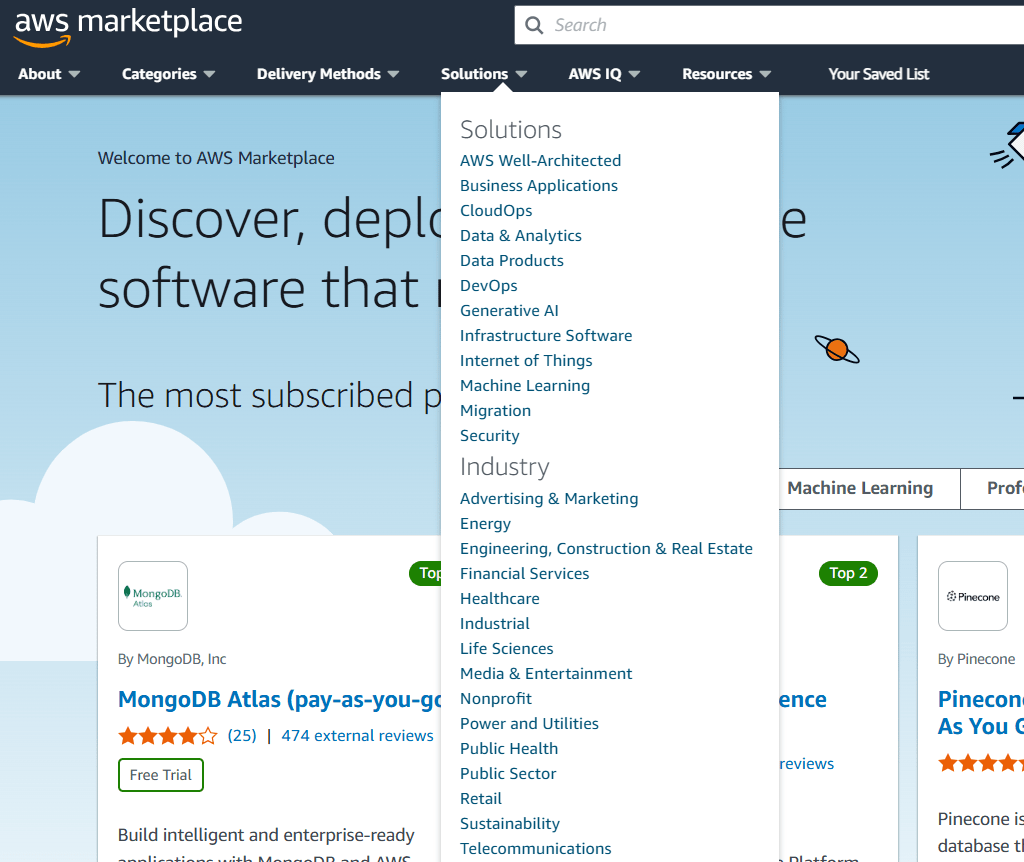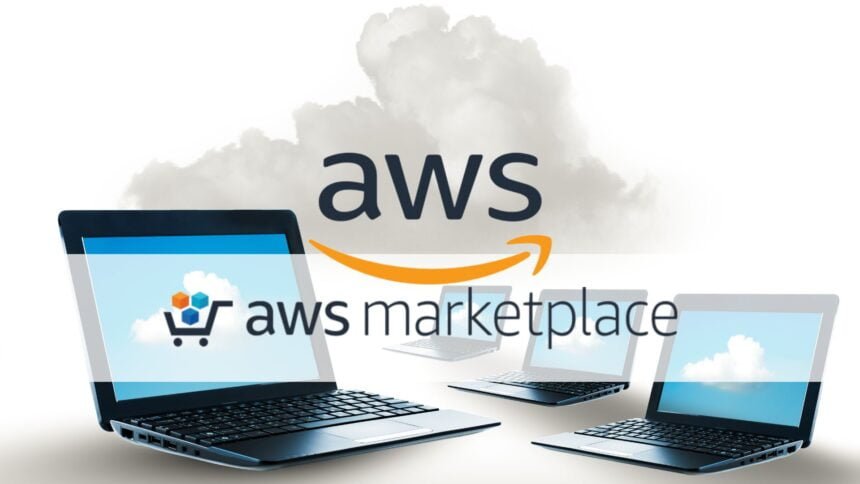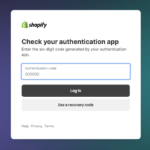In today’s fast-paced business landscape, the ability to quickly and efficiently acquire the right software solutions can make all the difference. Whether you’re a small startup or a large enterprise, the challenges of traditional software procurement can be daunting – from navigating complex licensing agreements to managing multiple vendors and payment methods.
Enter AWS Marketplace, a game-changing platform that is revolutionizing the way businesses discover, deploy, and manage their software. In this comprehensive guide, we’ll dive deep into the world of AWS Marketplace, exploring its key features, real-world success stories, and practical tips to help you unlock its full potential.
The AWS Marketplace Advantage: Simplifying Software Acquisition
AWS Marketplace is more than just a digital catalog – it’s a one-stop-shop for all your software needs. Imagine being able to browse through thousands of curated software listings, test them out, and deploy them with just a few clicks. That’s the power of AWS Marketplace.
Key Benefits of AWS Marketplace
- Vast Selection: With over 12,000 software listings spanning various categories, from security and networking to machine learning and DevOps, you’re sure to find the perfect solution for your business needs. The catalog is constantly expanding, ensuring you always have access to the latest and greatest software offerings.
- Streamlined Procurement: Say goodbye to the hassle of negotiating contracts and managing multiple vendors. AWS Marketplace allows you to purchase software licenses directly through your existing AWS account, consolidating all your software costs into a single bill. This not only simplifies the procurement process but also provides you with greater visibility and control over your software spending.
- Flexible Deployment: Whether you prefer Amazon Machine Images (AMIs), container images, or SaaS offerings, AWS Marketplace has you covered. You can deploy software in the way that best suits your infrastructure and workflows, ensuring a seamless integration with your existing systems.
- Trusted Ecosystem: AWS Marketplace is curated by the experts at Amazon Web Services, ensuring that the software listed is of the highest quality and security standards. You can trust that the solutions you’re evaluating have been thoroughly vetted and are backed by the reliability of the AWS platform.
- Seamless Integration: With deep integration into the AWS ecosystem, you can easily connect your AWS Marketplace software solutions with other AWS services, creating a powerful and cohesive technology stack. This allows you to leverage the full capabilities of the AWS cloud and unlock new levels of efficiency and productivity.

Discovering the AWS Marketplace Catalog: Discover Your Perfect Fit
Exploring the vast AWS Marketplace catalog can be a daunting task, but fear not! We’ve got you covered with a step-by-step guide to help you find the software that aligns with your business needs.
Step 1: Identify Your Requirements
Start by clearly defining your software requirements. Consider factors such as functionality, scalability, integration needs, and budget. This will help you narrow down your search and ensure you find the perfect solution.
Step 2: Explore the Categories
AWS Marketplace organizes its offerings into various categories, making it easy to browse and discover relevant solutions. Some of the most popular categories include:
| Category | Examples |
|---|---|
| Security | Firewalls, antivirus, identity management |
| Networking | VPNs, load balancers, content delivery networks |
| Storage | Object storage, file storage, database solutions |
| Machine Learning | Predictive analytics, natural language processing, computer vision |
| DevOps | Monitoring, automation, containerization tools |
| Business Applications | CRM, ERP, productivity suites |
| Data and Analytics | Business intelligence, data warehousing, data lakes |
| Internet of Things (IoT) | Device management, data ingestion, analytics |
| Blockchain | Smart contracts, decentralized applications |
| Quantum Computing | Quantum algorithms, quantum simulation |
Step 3: Utilize the Search Functionality
If you have a specific software vendor or product in mind, use the search bar to quickly find it. You can also search by keywords, features, or delivery methods to explore a wider range of options.
Step 4: Evaluate and Compare
Once you’ve identified a few promising solutions, take the time to thoroughly evaluate each one. Compare features, pricing, customer reviews, and deployment options to ensure you make an informed decision.
Step 5: Test and Deploy
Many software listings on AWS Marketplace offer free trials or test environments, allowing you to try before you buy. Take advantage of these opportunities to ensure the solution meets your needs before making a purchase.

Real-World Success Stories of AWS Marketplace
Let’s take a closer look at how some businesses have leveraged the power of AWS Marketplace to transform their operations.
Vonage: Gaining Observability with Epsagon
Vonage, a leading communications platform provider, needed a way to gain visibility into its microservice workloads. They turned to Epsagon, an observability solution available on AWS Marketplace, to quickly detect and resolve issues. The result? Faster time-to-market and reduced troubleshooting time.”
Teams at Vonage needed observability into all service data to easily detect problems and resolve them quickly,” said Tomer Zilberstein, Senior Technical Manager at Vonage. “The company procured Epsagon from AWS Marketplace to gain insight into all its microservice workloads, go to market faster, and reduce troubleshooting time.”
Databricks: Accelerating Data Intelligence with the Databricks Platform
Databricks, a data and AI company, wanted to empower its entire organization with the power of data and AI. By deploying the Databricks Data Intelligence Platform from AWS Marketplace, they were able to unlock the full potential of their data, driving innovation and business growth.”
The Databricks Data Intelligence Platform unlocks the power of data and AI for your entire organization,” the company states on its AWS Marketplace listing. “
Start today and get a 14-day free trial, cancel anytime.”
Pinecone: Enhancing Applications with Vector Search
Pinecone, a vector database provider, recognized the growing need for vector search in modern applications. By offering their solution on AWS Marketplace, they made it easy for developers to add state-of-the-art vector search capabilities to their products, unlocking new possibilities for their customers.”
Pinecone is a fully managed vector database that makes it easy to add vector search to production applications,” the Pinecone listing on AWS Marketplace explains. “The Pinecone Vector Database combines state-of-the-art vector search libraries, advanced indexing, and scalable infrastructure to power your applications.”
These success stories are just the tip of the iceberg. Businesses across industries are leveraging AWS Marketplace to streamline their software procurement, reduce costs, and drive innovation.

Mastering the AWS Marketplace Experience: Tips and Tricks
To help you make the most of your AWS Marketplace journey, we’ve compiled a list of valuable tips and tricks:
1. Leverage the Cheat Sheet
Use this handy cheat sheet to quickly navigate the AWS Marketplace and find the software solutions that best fit your needs:
| Feature | Description |
|---|---|
| Categories | Explore software by industry, use case, or technology |
| Delivery Methods | Choose from AMIs, container images, SaaS, and more |
| Pricing Models | Understand the various pricing options, including hourly, monthly, and annual subscriptions, as well as private offers and custom pricing |
| Free Trials | Take advantage of free trials to test software before committing |
| Customer Reviews | Read real-user feedback to gauge the quality and performance of software |
2. Stay Informed with Relevant Statistics
Keep these key statistics in mind as you navigate the AWS Marketplace:
- Over 12,000 software listings across 40+ categories
- 325,000+ active customers deploying software from AWS Marketplace
- 50% of Fortune 100 companies use software from AWS Marketplace
- 80% of AWS Marketplace customers use the platform to discover new software solutions
3. Embrace the Human Touch
While AWS Marketplace is a powerful digital platform, don’t forget the importance of human interaction. Reach out to the software vendors, ask questions, and build relationships to ensure you find the perfect solution for your business.4. Leverage the AWS Marketplace Community
Tap into the wealth of knowledge and experience within the AWS Marketplace community. Engage with other users, participate in forums, and stay up-to-date with the latest trends and best practices.5. Continuously Optimize Your Software Stack
Remember, your software needs may evolve over time. Regularly review your AWS Marketplace solutions and explore new offerings to ensure your technology stack remains optimized for your business.

The Full Potential of AWS Marketplace: Advanced Strategies
As you become more familiar with AWS Marketplace, you can explore advanced strategies to further optimize your software procurement and management.
Private Offers: Tailored Solutions for Your Business
AWS Marketplace offers a Private Offers feature, which allows you to negotiate custom pricing and terms directly with software vendors. This can be particularly beneficial for enterprises with specific requirements or high-volume software needs.”
BankUnited was looking for more flexible pricing and engagement terms,” said Michael Lehmbeck, Cloud Architecture and Operations Manager at BankUnited. “AWS Marketplace private offers provides a more mature procurement workflow and approval process than the point, click, purchase methodology of the public marketplace.”
Managed Services: Offload the Burden of Software Management
If you’re looking to reduce the administrative overhead of managing your software solutions, consider leveraging AWS Marketplace Managed Services. These services, provided by AWS Partner Network (APN) members, can handle tasks such as software deployment, configuration, and ongoing maintenance, freeing up your IT team to focus on more strategic initiatives.”
The greatest benefit is that it is easy to use,” said Ian Binder, Director of Infrastructure at i360. “Our data services or infrastructure teams can browse AWS Marketplace and find preconfigured applications with licenses included. Orders require fewer touches to complete, and everything is on a single bill.”
Procurement Transformation: Aligning Software with Business Objectives
For enterprises seeking a more comprehensive approach to software procurement, consider partnering with an AWS Marketplace Consulting Partner. These partners can help you align your software investments with your business objectives, optimize your cloud spending, and implement a robust cloud financial management (FinOps) framework.”
Because of AWS Marketplace, Cimpress has been able to shorten procurement cycles of software and services needed to build solutions effectively in AWS by putting Marketplace’s expansive catalog directly in autonomous teams’ hands,” said Jeremy Potash, Director of Technology at Cimpress Technology.

AWS Marketplace vs. Azure Marketplace
Key Differences:
- Launch Timeline: AWS Marketplace launched in 2012, while Azure Marketplace came later in 2014. This gives AWS Marketplace a longer history and more established ecosystem.
- Catalog Size: As of 2024, AWS Marketplace has over 42,000 listings, while Azure Marketplace has over 41,000. AWS has a slightly larger catalog.
- Co-Sell Readiness: The process for becoming “co-sell ready” differs between the two marketplaces. On AWS, co-sell ready means you are already transactable. On Azure, there are additional requirements like hitting revenue targets and technical validation.
- Pricing Models: Both offer flexible pricing options like hourly, monthly, annual, and usage-based. Azure also supports the “Bring Your Own License” (BYOL) model.
- Fees: AWS charges 1.5-3% of sales, while Azure recently reduced its fees to 3% (down from 20%).
Similarities:
- Both offer a wide range of software categories from security to machine learning.
- Both allow for private offers and custom pricing negotiations.
- Both have active partner ecosystems and programs to support ISVs.
- Buyers can consolidate cloud spend and streamline procurement on both platforms.
AWS Marketplace vs. Google Cloud Marketplace
Key Differences:
- Catalog Size: AWS Marketplace has a significantly larger catalog with over 42,000 listings, compared to around 5,000 on Google Cloud Marketplace.
- Partner Programs: AWS has more mature and extensive partner programs like AWS Partner Paths, while Google Cloud has been building out its partner ecosystem.
- Pricing Models: Google Cloud Marketplace offers more flexible pricing models like revenue sharing, in addition to standard options.
Similarities:
- Both provide a curated selection of trusted, enterprise-ready software.
- Buyers can leverage their existing cloud accounts and billing on both platforms.
- ISVs can expand their reach and leverage the cloud provider’s brand and customer base.
AWS Marketplace vs. Salesforce AppExchange
Key Differences:
- Cloud vs. SaaS Focus: AWS Marketplace is focused on cloud infrastructure and platform services, while AppExchange is centered around Salesforce’s SaaS ecosystem.
- Pricing Models: AWS Marketplace offers more diverse pricing options, including usage-based and custom pricing. AppExchange is more focused on subscription-based models.
- Buyer Audience: AWS Marketplace caters to a broader range of enterprise cloud customers, while AppExchange is tailored to Salesforce customers.
Similarities:
- Both provide a centralized marketplace for discovering and deploying third-party solutions.
- ISVs can leverage the platform’s brand, customer base, and streamlined procurement on both.
- The marketplaces aim to simplify software acquisition and management for their respective customers.
In summary, while the major cloud marketplaces share some common goals and features, they each have distinct characteristics based on their cloud platform, ecosystem, and target audience. Businesses should evaluate which marketplace best aligns with their specific software needs and cloud strategy.

Fees for AWS Marketplace compared to those of other cloud marketplaces
Here’s a comprehensive comparison of the fees and pricing models across the major cloud marketplaces:
AWS Marketplace Fees
- Public Offers:
- Software-as-a-Service (SaaS) – 3% listing fee
- Server (AMI, container, ML) – 20% listing fee
- AWS Data Exchange – 3% listing fee
- Private Offers:
- Less than $1M Total Contract Value (TCV) – 3% listing fee
- $1M to less than $10M TCV – 2% listing fee
- $10M or greater TCV – 1.5% listing fee
- Renewals – 1.5% listing fee
- Channel Partner Private Offers: 0.5% uplift on the private offer listing fee
Azure Marketplace Fees
- Standard Store Service Fee: 3% of sales
- Pricing Models:
- Usage-based: Microsoft keeps 3% of your license cost, plus 100% of the Azure usage cost
- Bring Your Own License (BYOL): Microsoft keeps 0% of your license cost, plus 100% of the Azure usage cost
- SaaS Subscriptions: Microsoft keeps 3% of your license cost
Google Cloud Marketplace Fees
- Pricing Models:
- Flat hourly rate, billed monthly
- Usage-based fees based on resource usage (vCPUs, memory, GPUs, etc.)
- Bring Your Own License (BYOL)
- Service Fees: 3% standard store service fee
Salesforce AppExchange Fees
- Royalty Rates:
- OEM Program: 15% (reduced to 10% for revenue over $20M)
- ISVforce Program: 15% (reduced to 10% for revenue over $20M)
- Security Review Fees:
- $2,700 for the first year
- $300 for subsequent years (if charging customers)
- Free if offering a completely free app
In summary:
- AWS Marketplace has the most complex fee structure, with different rates for public vs private offers, as well as channel partner transactions. Fees range from 1.5% to 20%.
- Azure Marketplace and Google Cloud Marketplace both have a simpler 3% standard service fee.
- Salesforce AppExchange has royalty rates of 15%, which can be reduced to 10% for larger ISVs, plus mandatory security review fees.
The choice of cloud marketplace will depend on factors like the size of your business, pricing models, and the specific requirements of your software offerings. Evaluating the tradeoffs in fees, ecosystem, and customer reach can help determine the best fit.

Are there any hidden fees in AWS Marketplace
AWS Marketplace has a relatively straightforward fee structure, with no hidden fees. The fees are clearly outlined and categorized based on the type of offer and the total contract value (TCV). Here’s a breakdown of the fees:
Public Offer Listing Fees
- Software-as-a-Service (SaaS): 3%
- Server (AMI, container, ML): 20%
- AWS Data Exchange: 3%
Private Offer Listing Fees
- Less than $1M TCV: 3%
- Between $1M and less than $10M TCV: 2%
- Equal to or greater than $10M TCV: 1.5%
- All Renewals: 1.5%
Channel Partner Private Offer (CPPO) Fees
- 0.5% uplift on the private offer listing fee
Professional Services Fees
- 2.5% listing fee for private offers
Other Fees
- No service fee for free or open-source software
- No service fee for Bring Your Own License (BYOL) products
AWS Marketplace has simplified and reduced its listing fees, making it easier for sellers to understand and manage their costs. The changes, effective from January 5, 2024, include reduced fees for private offers and a more consistent fee structure across different types of offers and TCVs
Here’s a table comparing the fees across the major cloud marketplaces:
| Marketplace | Public Offer Fees | Private Offer Fees | Other Fees |
|---|---|---|---|
| AWS Marketplace | – SaaS: 3% – Server (AMI, container, ML): 20% – AWS Data Exchange: 3% | – Less than $1M TCV: 3% – $1M to less than $10M TCV: 2% – $10M or greater TCV: 1.5% – Renewals: 1.5% | – Channel Partner Private Offer: 0.5% uplift on private offer fee – Professional Services: 2.5% – No fees for free/open-source or BYOL |
| Azure Marketplace | – Standard Store Service Fee: 3% | – Same as public offer | – Usage-based: 3% of license cost + 100% Azure usage – BYOL: 0% of license cost + 100% Azure usage – SaaS Subscriptions: 3% of license cost |
| Google Cloud Marketplace | – Standard Store Service Fee: 3% | – Same as public offer | – Hourly rate, usage-based, or BYOL |
| Salesforce AppExchange | – OEM Program: 15% (reduced to 10% for revenue over $20M) – ISVforce Program: 15% (reduced to 10% for revenue over $20M) | – Same as public offer | – Security Review Fees: $2,700 first year, $300 subsequent years (if charging customers), free if offering a free app |
The key differences are:
- AWS Marketplace has a more complex fee structure with different rates for public vs. private offers and channel partner transactions.
- Azure Marketplace and Google Cloud Marketplace have a simpler 3% standard service fee.
- Salesforce AppExchange has royalty rates of 15%, which can be reduced to 10% for larger ISVs, plus mandatory security review fees.
Overall, AWS Marketplace offers the most flexibility in pricing models and private offer negotiations, while the other marketplaces have a more straightforward fee structure.

Any discounts available for long-term listings on AWS Marketplace
There are a few key points about discounts and pricing models on AWS Marketplace:
- Private Offer Listing Fees:
- For private offers with a Total Contract Value (TCV) of less than $1M, the listing fee is 3%.
- For private offers between $1M and less than $10M TCV, the listing fee is 2%.
- For private offers of $10M or greater TCV, the listing fee is 1.5%.
- Renewal of private offers also has a 1.5% listing fee.
- Annual Pricing Model:
- AWS Marketplace allows sellers to offer annual pricing models, which can provide up to 40% savings compared to hourly pricing for extended usage.
- Annual pricing is defined per instance type and must also have an hourly pricing option.
- Customers are invoiced for the full 12-month subscription upfront.
- Multi-Year and Custom Duration Contracts:
- Through private offers, sellers can offer multi-year (up to 3 years) or custom duration contracts with upfront payment or flexible payment schedules.
- Bring Your Own License (BYOL) Pricing:
- There are no service fees for BYOL products on AWS Marketplace.
So in summary, the key discounts and long-term pricing options on AWS Marketplace include:
- Tiered private offer listing fees that decrease for larger TCV deals
- Annual pricing models that can offer up to 40% savings compared to hourly
- Multi-year and custom duration contracts through private offers
- No service fees for BYOL products
The pricing and discounts are designed to incentivize longer-term commitments and higher-value transactions on the AWS Marketplace platform.

Conclusion: Unlock the Full Potential of AWS Marketplace
In today’s fast-paced business landscape, the ability to quickly and efficiently acquire the right software solutions can make all the difference. AWS Marketplace is your gateway to a world of possibilities, offering a curated selection of high-quality software, streamlined procurement, and seamless integration with the AWS ecosystem.
By leveraging the power of AWS Marketplace, you can free up valuable time and resources, focus on your core business objectives, and drive innovation like never before. Whether you’re a small startup or a large enterprise, AWS Marketplace has the tools and resources to help you unlock the full potential of your technology stack.
So, what are you waiting for? Dive into the AWS Marketplace and discover the transformative power of effortless software procurement.
Also Read: Demand Curve and Consumer Behavior in Online Commerce – Tech News Before It’s News | Shift GearX
You will also love: 2024 Big Cartel Pricing: What You Need to Know – Tech News Before It’s News | Shift GearX
If you liked this article, please share it and subscribe to my website. For consulting work, please visit my website, Shift Gear and I would be glad to help you in your requirement.









